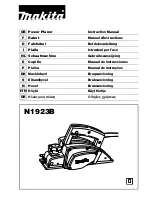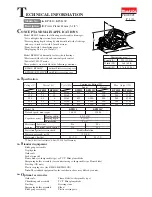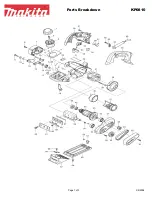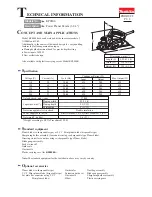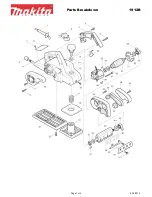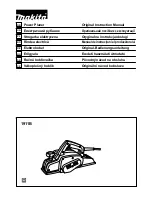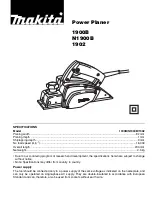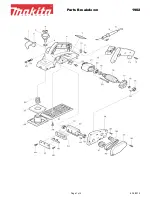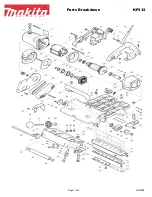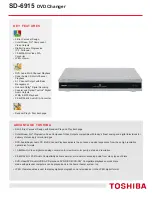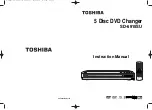
-36-
G1037Z 13" Planer/Moulder
To be effective, the infeed and outfeed rollers
must put pressure on the workpiece as it feeds
through the planer/moulder. Too little pressure
and the boards will not feed into the machine, too
much pressure can overload the motor.
Experiment with the best pressure settings for
your work situations. Some lumber will feed
through with relatively few problems, while other
lumber will have more difficulty.
Adjusting roller pressure does not affect the
height of the feed roller.
To adjust roller pressure:
1. Disconnect the machine from the power
source!
2.
Ensure that knives and feed rollers are set
correctly.
3.
Make sure that the spring pressure adjust
nuts shown in
Figure 35
are all an equal
height from the top of the screw.
Figure 35.
Feed roller height adjustment.
4.
Increase feed roller pressure by tightening
the spring pressure adjust nuts equally.
Loosen the spring pressure adjust nuts to
reduce feed roller pressure.
The thickness scale, located below the hand-
wheel, can be adjusted for accuracy. However,
material must be run through the machine to
adjust the thickness scale. Make certain you have
followed the directions in
Section 6: Operations
for test running before attempting to make these
adjustments.
To adjust the scale:
1.
Select a pre-planed piece of lumber to use
for the test. Measure the lumber with calipers
and make a note of its exact thickness.
2.
Move the cutterhead to
1
⁄
16
" under the thick-
ness of your lumber and feed your test board
through the planer.
3.
Turn the handwheel one half rotation and run
the board through once more. Turn the board
over and repeat.
4.
Measure the board again and compare your
results with the scale. If there is a discrepan-
cy, loosen the scale pointer screw shown in
Figure 36
and correct the position of the
pointer.
Figure 36.
Scale pointer screw.
Thickness Scale
Feed Roller Pressure






























